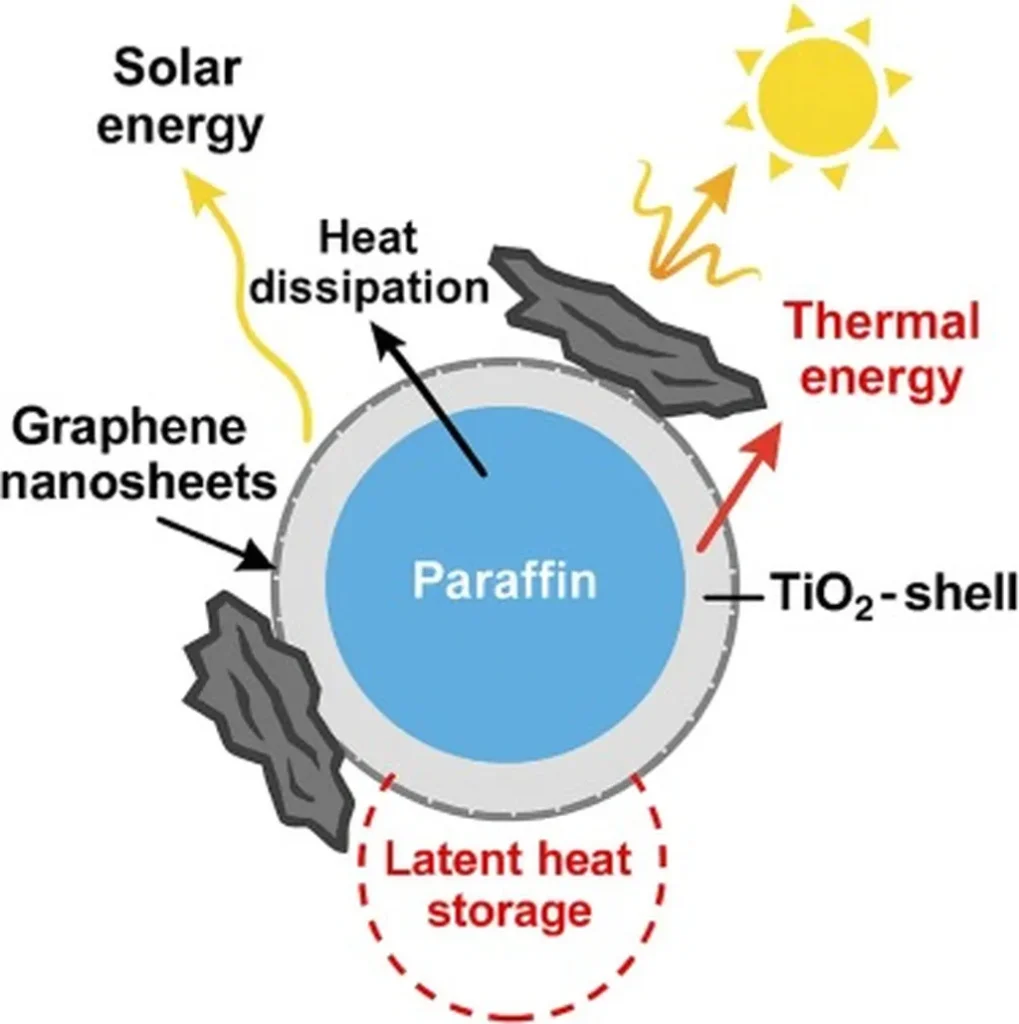In the quest for sustainable energy solutions, researchers have long been exploring ways to harness the sun’s power more efficiently. A recent study published in *Case Studies in Thermal Engineering* (translated as “Studies in Thermal Engineering”) introduces a novel solar absorber design that could significantly enhance thermal energy storage applications, with far-reaching implications for agriculture, industry, and residential sectors.
The research, led by Meshari Alsharari from the Department of Electrical Engineering at Jouf University in Saudi Arabia, focuses on a multi-layer graphene solar thermal absorber incorporating Ti-InAs-In2Se3 materials. This innovative design aims to maximize solar energy absorption, a critical factor in improving the efficiency of solar power systems.
“Our goal was to develop a solar absorber that could achieve high absorption rates across a broad spectrum of wavelengths,” Alsharari explained. “The integration of graphene into the absorber structure has shown remarkable results, pushing the boundaries of what’s possible in solar energy capture.”
The study reports that the designed structure achieves an impressive 97.38% absorption within the 0.77–2.44 μm range, 95.26% within the 0.7–2.5 μm range, and maintains an overall high efficiency of 93.28% across a broad 2800 nm bandwidth. These figures represent a significant leap forward in solar absorber technology, offering potential benefits for various thermal energy applications.
One of the key aspects of this research is the use of machine learning combined with the finite element method (FEM) for parametric analysis and optimization. This approach not only enhances the accuracy of the design but also accelerates the development process, making it more adaptable to different applications.
“The combination of machine learning and FEM has allowed us to fine-tune the absorber’s parameters with unprecedented precision,” Alsharari noted. “This methodology can be applied to other renewable energy technologies, paving the way for more efficient and sustainable solutions.”
The potential commercial impacts of this research are substantial. Enhanced solar absorbers can lead to more efficient solar thermal systems, which are crucial for applications such as water heating, industrial processes, and residential heating and cooling. In the agricultural sector, improved solar absorbers can contribute to more efficient greenhouse heating and water desalination, addressing critical needs in arid regions.
As the world continues to transition towards renewable energy sources, innovations like the one presented by Alsharari and his team play a pivotal role in shaping the future of the energy sector. The study’s findings not only highlight the importance of advanced materials and computational methods but also underscore the need for interdisciplinary collaboration in driving technological advancements.
In the broader context, this research could inspire further developments in thermal energy storage (TES) technologies, which are essential for balancing supply and demand in renewable energy systems. By improving the efficiency of solar absorbers, we can enhance the overall performance of TES systems, making them more reliable and cost-effective.
As we look ahead, the integration of cutting-edge materials and smart technologies will be key to unlocking the full potential of solar energy. The work of Alsharari and his team serves as a testament to the power of innovation in addressing global energy challenges and building a more sustainable future.

